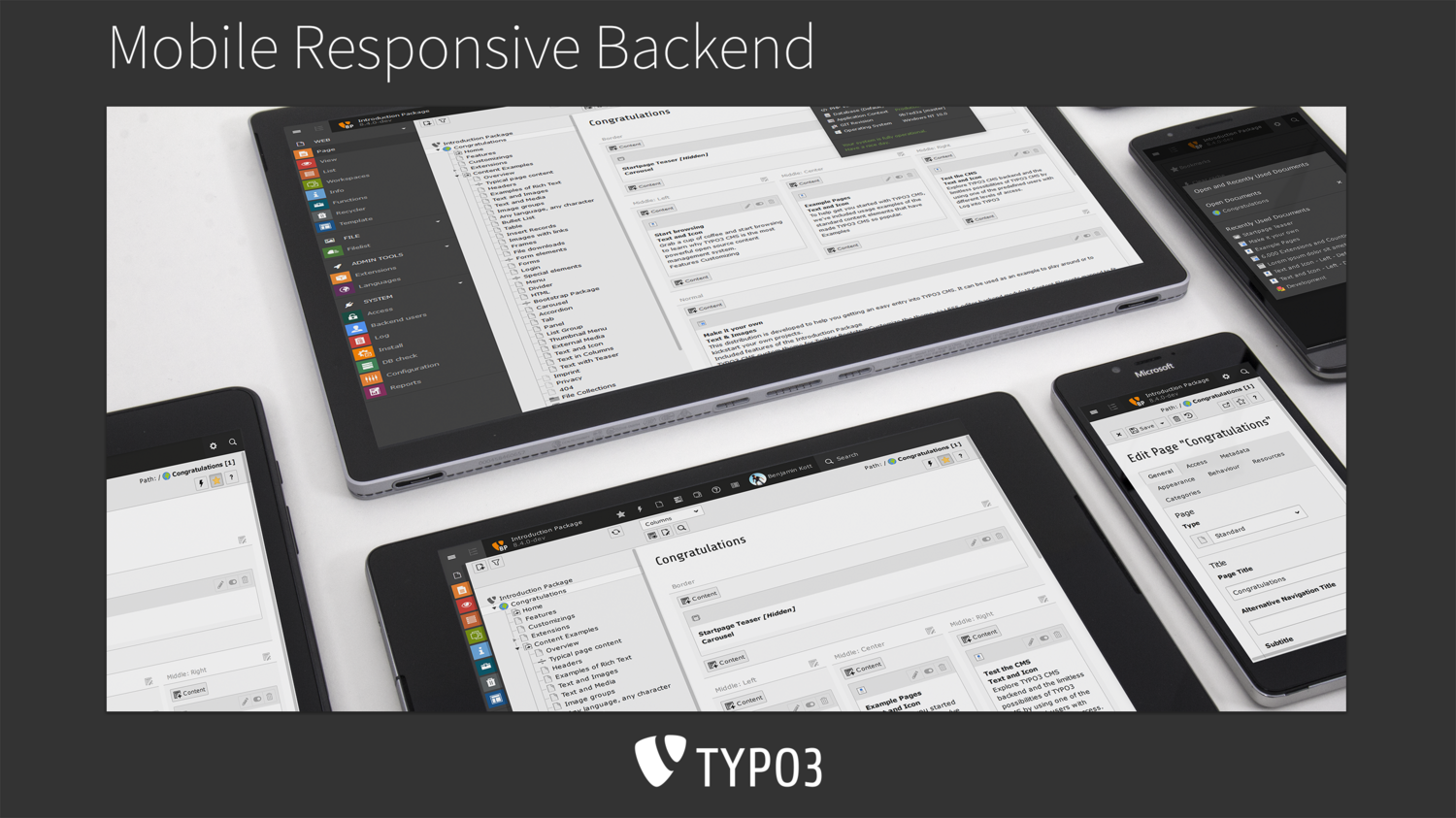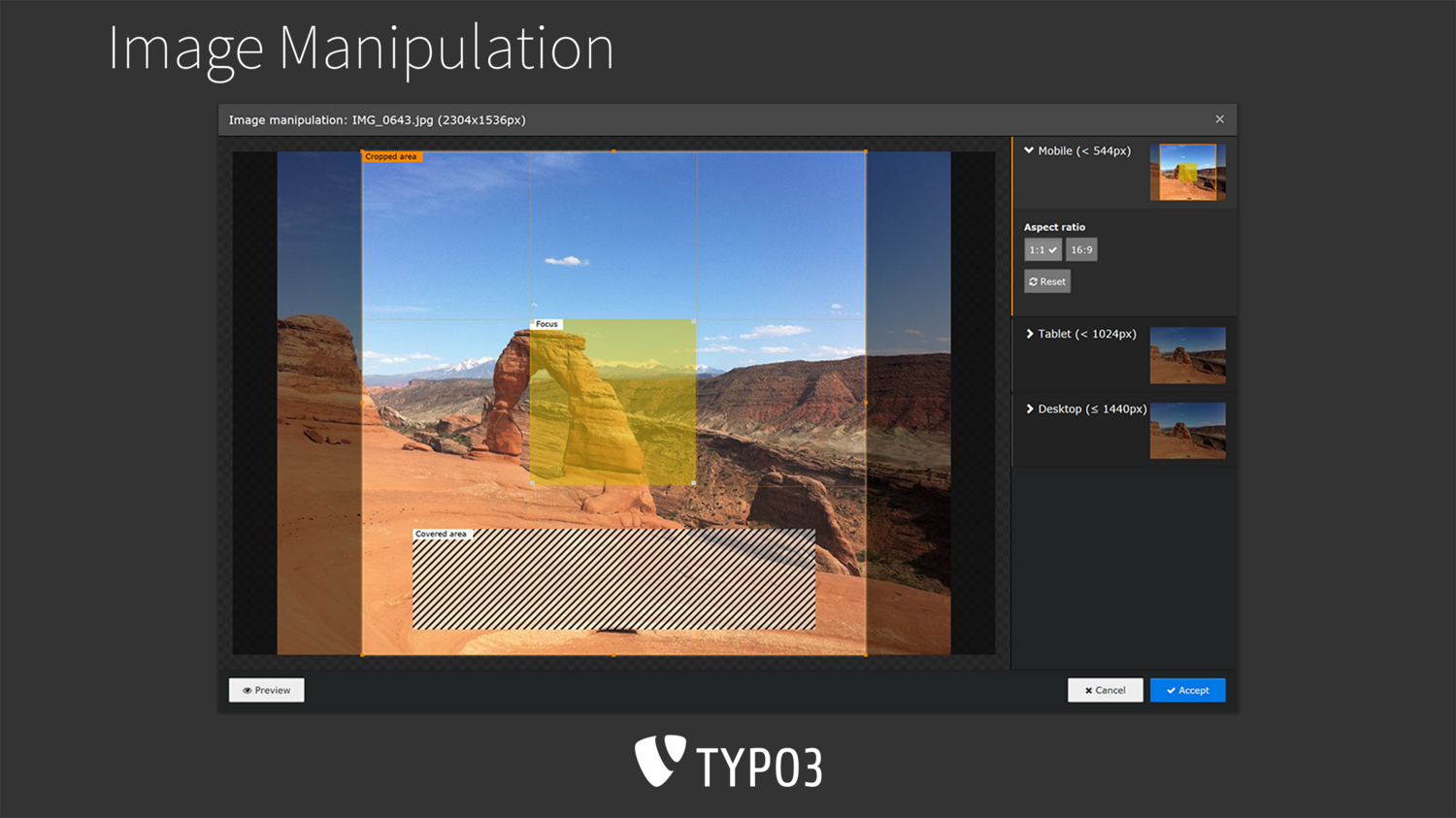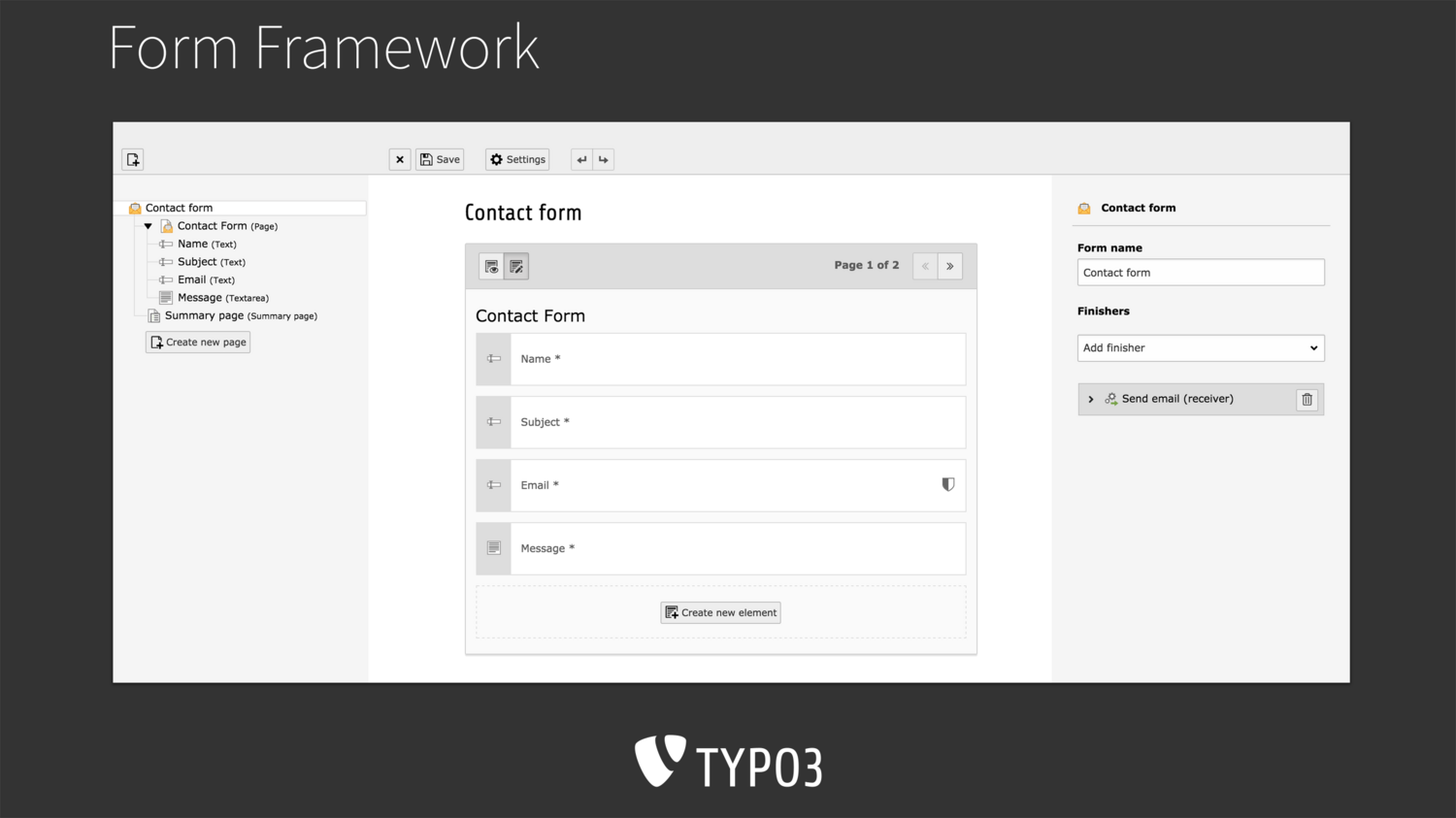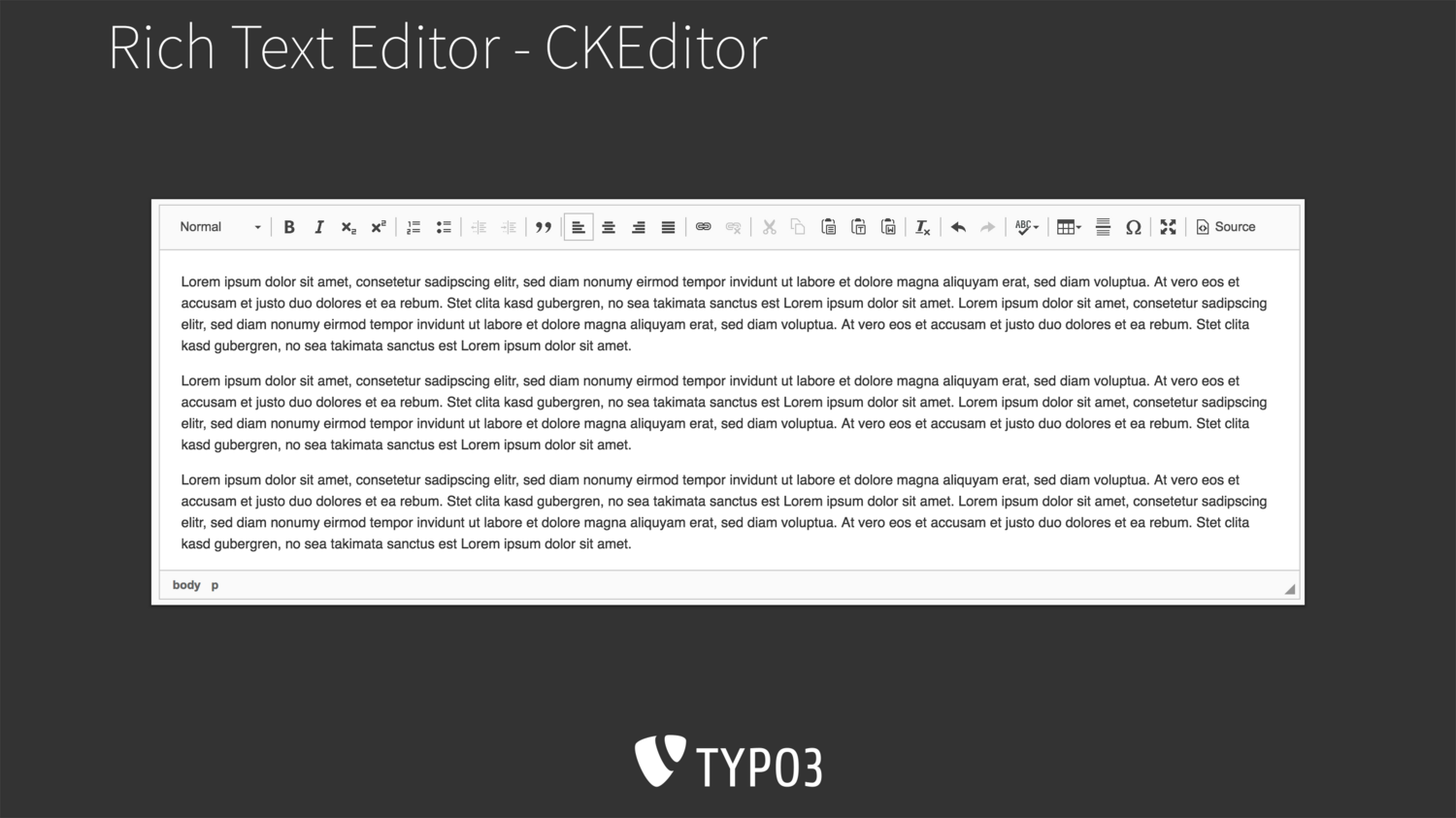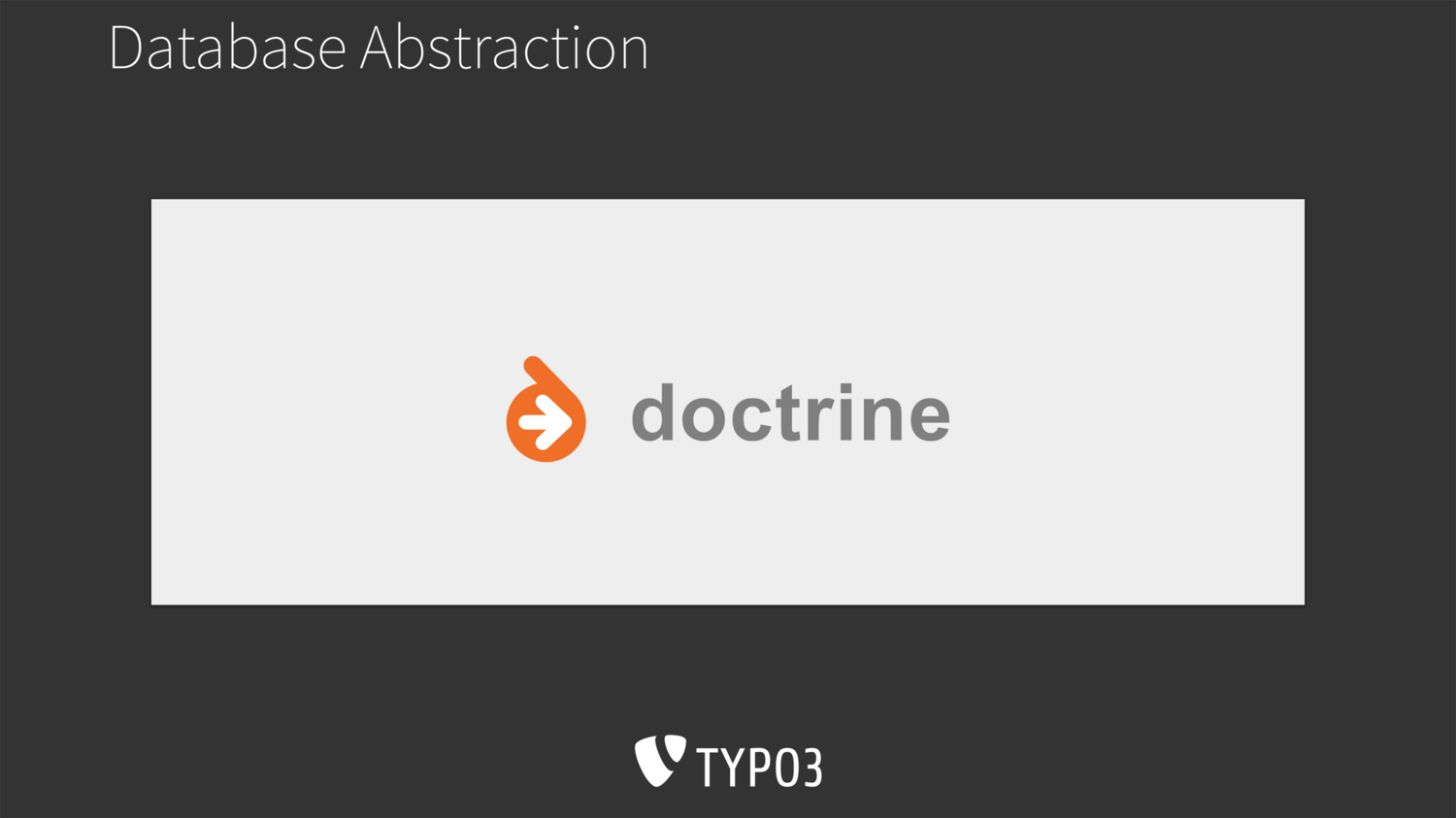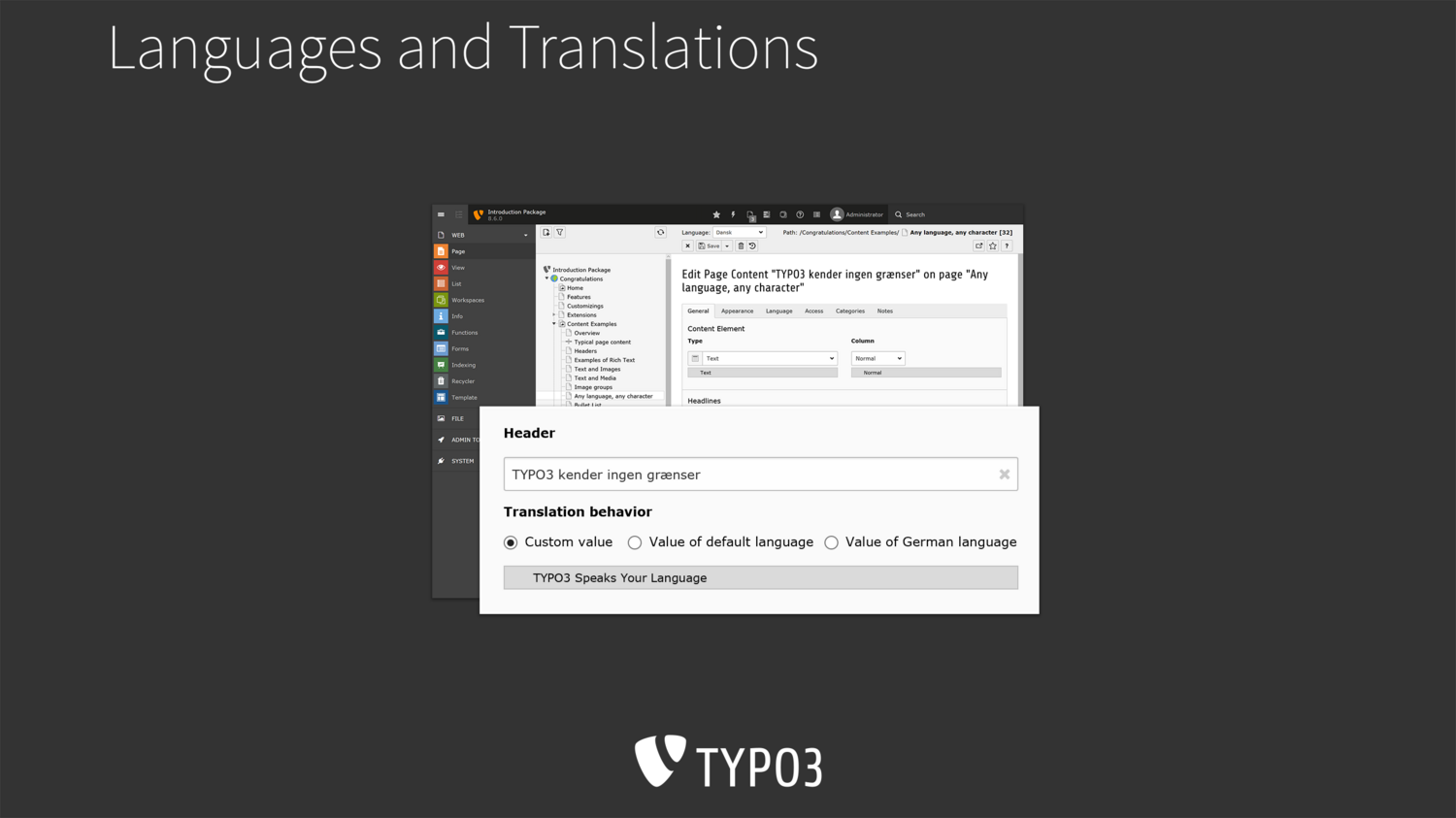Some features and components developed for TYPO3 by the Core Team are now available as extensions, as most projects do not require them. In case you are confronted by a specific requirement, the following extensions for TYPO3 v8 LTS are available for free in the TYPO3 Extension Repository (TER).
Compatibility Layer
The extension “compatibility7” (Compatibility Mode for TYPO3) provides an additional compatibility layer with legacy functionality for sites that have not fully migrated to TYPO3 v8 LTS yet. Please note that using this extension possibly has an impact on the performance of the website.
Frontend Editing
The original plan was to integrate frontend editing in TYPO3 v8 LTS. For several good reasons, the decision was made to continue developing this complex features as an extension on GitHub for the time being.
This extensions will be available on TER named as "frontend_editing".
Form Legacy
This extension implements the old form builder functionalities, which were replaced by the new Form Framework in TYPO3 v8 LTS.
Rich Text Editor "HtmlArea"
The previous RTE solution is still available for systems with complex requirements or configurations, specifically targetted for HtmlArea, and can be installed in exchange for CKEditor with no problems from TER.





